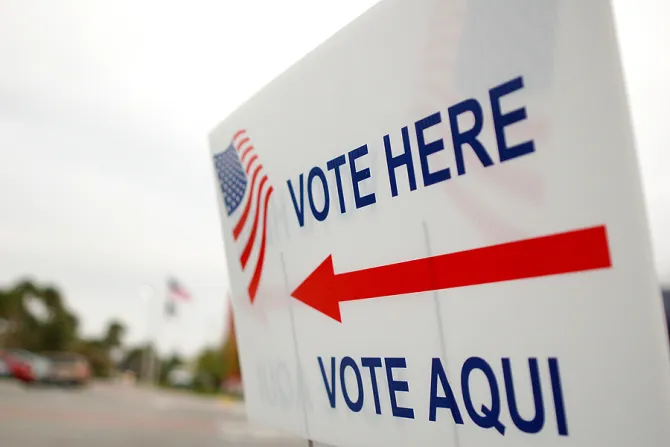Washington D.C., Nov 4, 2014 / 14:56 pm
The 2014 mid-term election is more about the economy and malaise with government than issues traditionally pertinent to Catholic voters, one political expert has said.
But because Catholics make up such a sizable portion of the electorate, their vote plays a significant role in determining the outcome.
"Surveys seem to suggest that the main things that voters care about, regardless of their religious background, include the economy, which affects everybody, and general unhappiness with government. And incumbents," Dr. Matthew Green, professor of politics at The Catholic University of America, told CNA.
For the Nov. 4 mid-term elections, 36 U.S. Senate seats are up for election, along with all 435 seats in the House of Representatives. Political observers have tabbed close to a dozen Senate seats as "toss-up" races that could determine which party controls the Senate.
However, while the Catholic vote has historically supported the winning party in an election year and is sometimes described as a "bellwether" in determining results, the election this year likely will not hinge on issues traditionally viewed as important to Catholics, Green noted. In the past, those issues would have included abortion, religious liberty problems in the Affordable Care Act, welfare, poverty, and the death penalty.
Green did give an example of a close race involving Catholic issues – the Colorado Senate race where the Democratic incumbent Sen. Mark Udall has made abortion and contraception core issues of the campaign.
However, "other than that race, it's really hard for me to think of many other campaigns where issues that have traditionally been important to Catholic voters are at the forefront," Green said.
In past elections, about 1 in 4 voters identified as Catholic, making up a significant portion of the electorate. Some analysts have talked about "the Catholic vote" and its role in deciding elections.
The Catholic vote is a mirror of the country, Green explained. Not only does it reflect the overall vote in elections, but it is divided and polarized just like the overall electorate.
"As a group, Catholic voters in the United States tend to be swing voters," Green explained. "The percent of American Catholics who voted for Obama in 2012 is almost exactly the percentage of the entire voting population that cast ballots for Obama."
Pew Research analysis found that not only in 2012 did the Catholic vote mirror the overall presidential vote, but it also did in the 2008 and 2004 presidential elections. And according to CNN exit polls in the last two mid-term elections, 2010 and 2006, Catholics overall voted for the party that picked up the most seats.
However, the Catholic vote is itself divided. "The reality is, there is no such thing as the Catholic vote. And there hasn't been for decades," Green noted. "If you break it apart, there are definitely differences."
He cited two specific groups: Latino Catholics who favor Democrats, and older white Catholics who are politically conservative.
"So when you break those apart, you see there's some variation there. And smart campaigns know which groups they can reach and which they don't. So yes, to speak of a monolithic Catholic vote is a bit misleading."
Green also said that no one party stands with Church teaching on all the moral issues because they tend to cater to certain voters.
"Each party tries its best to emphasize issues that they think will be appealing to Catholics, but they recognize that if you're a Democrat, you're not getting a very politically conservative white Catholic voter, it's just not likely to happen. So in some ways, each party has picked the issues that they think are most likely to get their voters out among the Catholic population and then emphasize those."
"The country is so polarized now, it extends through so many groups, and it really also includes Catholic voters, I would say."



